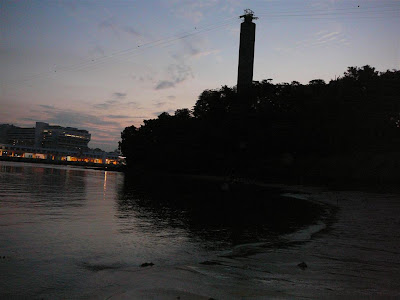
Woke up at 3am to catch the tide with the wildfilms and beachfleas to explore this great portion of Sentosa, just opposite Vivocity can you imagine.

First greetings from the coin seaweed (Halimeda sp.) These seaweed are hard because they contain calcium carbonate. Called as coin seaweed as they look like coins joint together in closer look. What a nice landscape they have created.

The wandering cowrie (Cypraea errones) is wandering in this IR shore, hoping to escape death in the future. There is a nice brown spot on the top of its shell. The shell is so shiny because it envelops it shell with its mantle.

Many Favid corals were found.

Another coral which I dont know the id.

An overturned horseshoe crab was found. Try not to hold it by its tail or else it might break. This is a negative demostration..hehe

Now the sun is rising, daylight for the creatures!

These plate or disc coral (Turbinaria sp.) are common in the shore.

A closer look reveals the beautiful polyps and tentacles. Corals are not stones! They are a colony of animals with photosynthetic algae that gives them the colour. Please dont step or kick them, or they will go "ouch!"

The sponges there are stunning. This one that is bright yellow.

My feet was used as a scale to reveal the gigantic sizes of these corals. They are even much bigger ones than these in the photos!

What's this? can someone help me id? :P
(update from Ria, it could possible be hard coral (Porites), but i did not touch to see if it was hard :P)

There are also clumps of tape seagrass (Enhalus acoroides) along the shore. They do great things for the ecosystem like trapping sediments, providing Dugong with food, home for the nursery of fishes and shrimps etc etc etc. They are the only flowering plants in the sea!

First time seeing a flounder, too bad its dead due to irresponsible drift nets lying around.

Updated: This is not a staghorn coral. It's Pocillopora sp. which in a different family altogether. (Thks Ria for informing)

Before proceeding to the recce for Naked hermit crab, I cant help but rush to take a photo of the large colony of corals here (Euphyllia sp). They are quite rare but are doing very well here!
Food for thought: If the IR has to really touch this shore, what can be done to minimise the impact?
No comments:
Post a Comment